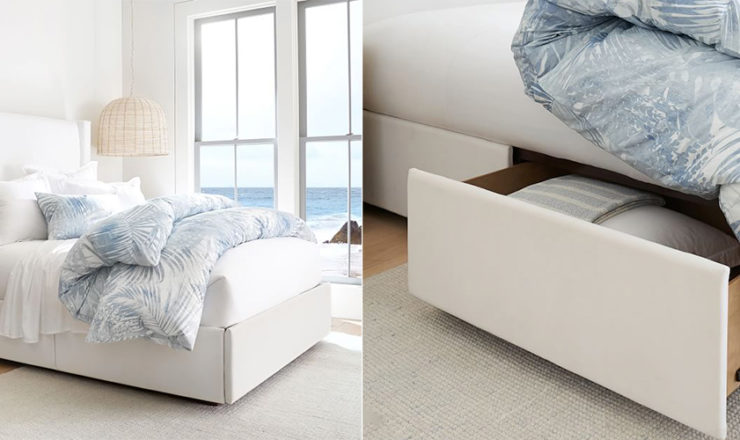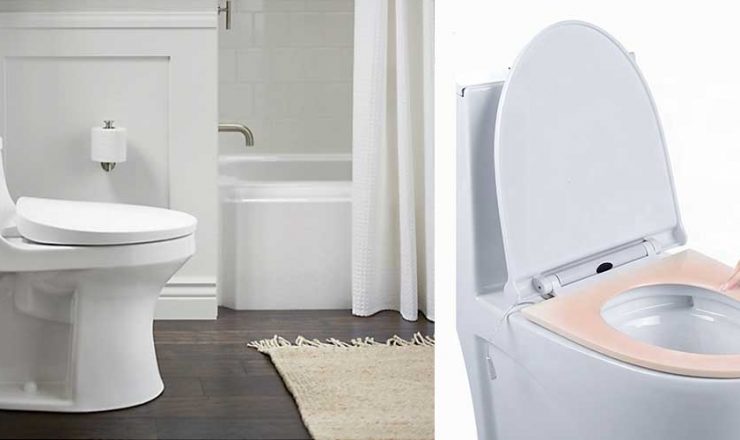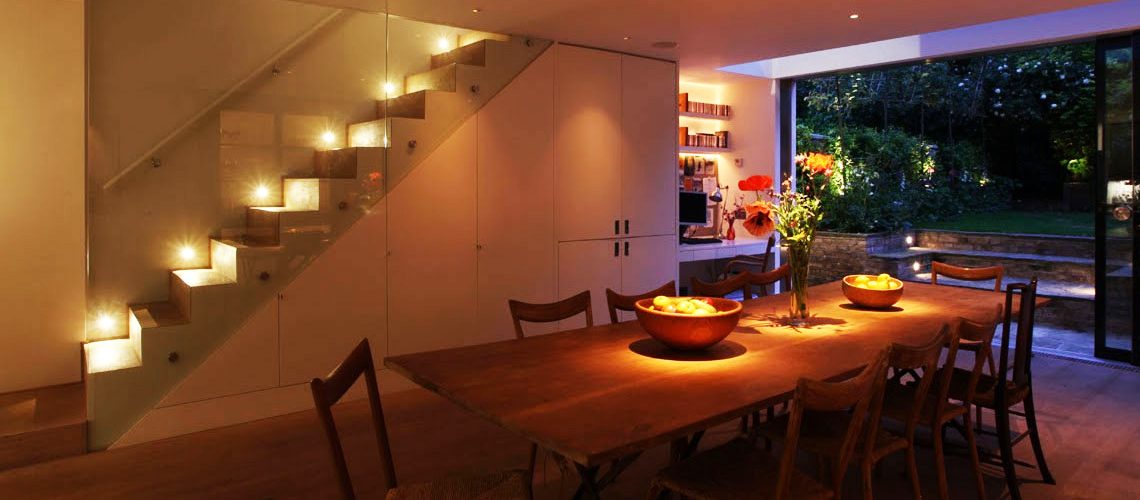
Types of Lighting for your Home
Last Updated on: 8th August 2024, 12:52 am
When you hear the word “lighting,” what comes to your mind?
The word “lighting” is more commonly associated with the effect or the arrangement of lights in a certain place. This place could be a workplace, a studio, theater, or even your home.
Lighting, indeed, plays a very important role in transforming a room as well as setting the personality of your place.
Hence, if you are looking for an ultimate guide to help you set the lighting in your home, then you have clicked on the right article!
This article tackles every detail of lighting including accent, general, distinguishing tasks, architectural lighting.
Not only that, this article also provides you with an explanation about different variations of colors and their effect on psychology.
The topic will also cover color temperatures, followed by determining all of the various kinds of interior and exterior lighting for your workplace or your home. Then, to wrap it all up, this article will give you access to the different photo galleries that showcase lighting options and settings for each space or room in your home.
So what are you waiting for? Scroll down and let’s begin!
When the lighting is done right, it can wonderfully transform your space into a whole new place. Not only that, good lighting can set the mood of your room and also adds a pleasant personality to your entire house.
Lighting gives emphasis to spaces and things that make the space alive. So, when it’s done wrong, your eyes have nothing else to set focus on.
There may be any other aspect of interior design that combines aesthetics and practicality as much as what lighting does.
As most people believe, the lighting might seem easy and simple. But unfortunately, that’s not the case at all. There is much more to understand about lighting that simply carries class and a good impression to you and your guests’ eyes.
Lighting is said to be both a form of science and an art.
The reason for this is that achieving good lighting can be pretty complicated because it has to balance between utility and design.
Hence, it is essential to discuss and understand the importance of lighting in interior design. It’s also good to identify what lighting you prefer the most and why you need to invest extra time picking and choosing the interior lighting in your home.
Role of Lighting In and Outside your home
To start with, we can simply tell why light plays an essential role in our home. Light functions as a source of illumination in a given space, providing the individuals a sight or a vision to perform certain functions and carry out tasks.
Lighting is mostly used as some sort of tool to help us visualize or see a certain room or space. Hence, how lighting is placed and applied can have a magical effect on any room or space you have.
In essence, you cannot fully immerse in the beauty of interior architecture in your home without proper and adequate lighting.
With a good lighting plan, you are sure to experience the wonder of decor and aesthetics of the surrounding atmosphere. From the furniture to the floors, and any given texture, a space that is well-lit can give emphasis on every single detail about a certain place.
With the use of adequate lighting, you can transform your home’s interior and bring the most life out of it.
In a society where modernity becomes a lifestyle, lights and lighting are very essential and in demand.
Without lighting, people will only depend on candles and the Earth’s natural light provider, which is the sun.
Although the natural light from the sun provides us with positive effects on the mental health aspect, and candles are a wonderful way to set the space’s mood and personality, these methods of lighting are very limited in terms of usage.
These are also not a very practical option to meet an individual’s daily needs since society nowadays is shifting towards a more techy and digital lifestyle.
Quality vs. Quantity
The quality often outweighs the quantity when it comes to lighting.
To give you a specific example, a lot of bedrooms seem to have an overhead lamp, a bedside lamp, and sometimes a desk lamp for possibly supplemental task lighting.
Even though you can turn on all of the lights in order to achieve a well-lit room, that would simply be too over-the-top.
To illuminate the whole room, an overhead light should be enough to do the trick and diffuse sufficient light.
However, you mostly won’t like it if there is an abundant source of light when you’re about to wind down for bed.
This is the reason why most people usually have a bedside lamp to transform their whole space into a calming retreat whenever they want to. Indeed, most people use light in various ways. Given this idea, there are different types of light that reflect this.
Color Temp and Light
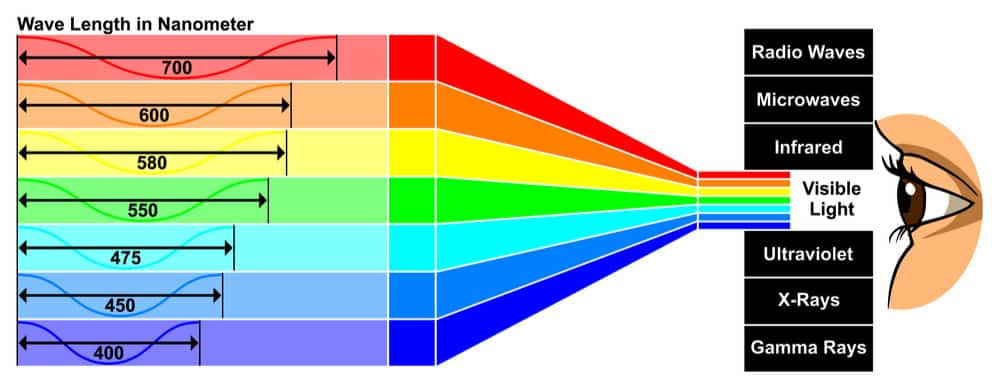
In your science classes during your early studies, you sure have encountered a discussion about color.
And as a definite fact, colors would definitely not exist if there is an absence of light. The light itself has wavelengths. The said wavelengths are emitted from the light source. Hence, through the wavelength’s reflection, individuals have the ability to see colors.
Color can only be seen when there is light, and the amount and type of lighting are able to influence how we visualize the different colors of a certain space.
A color could showcase itself as a specific hue under the influence of a single source of light. However, in a certain environment or surroundings where there are different kinds of lighting, that hue wouldn’t appear exactly how it is.
To take as an example, in most cases, people would agree that strawberries are red.
However, this is apparently only correct when the strawberry is under artificial daylight or broad daylight. In some circumstances where a certain object is subjected into a poorly lit, darkened rooms, the hue that we see with daylight illumination, perhaps the strawberry’s color (red), would appear as shades of gray and not the red that people expected, also, the color would slightly shift under different conditions of lighting.
For instance, if the source of light has a color of pure blue, a lemon (which is yellow under daylight conditions), would lean towards the greenish-yellow type of color. Meanwhile, when a yellow object is subjected to a pure red light condition, it would appear as a darkened orange-yellow hue.
While those are the extreme circumstances of lighting conditions, the kinds of light you use can have a direct impact on the colors of the furniture and walls in your home.
Color temperature
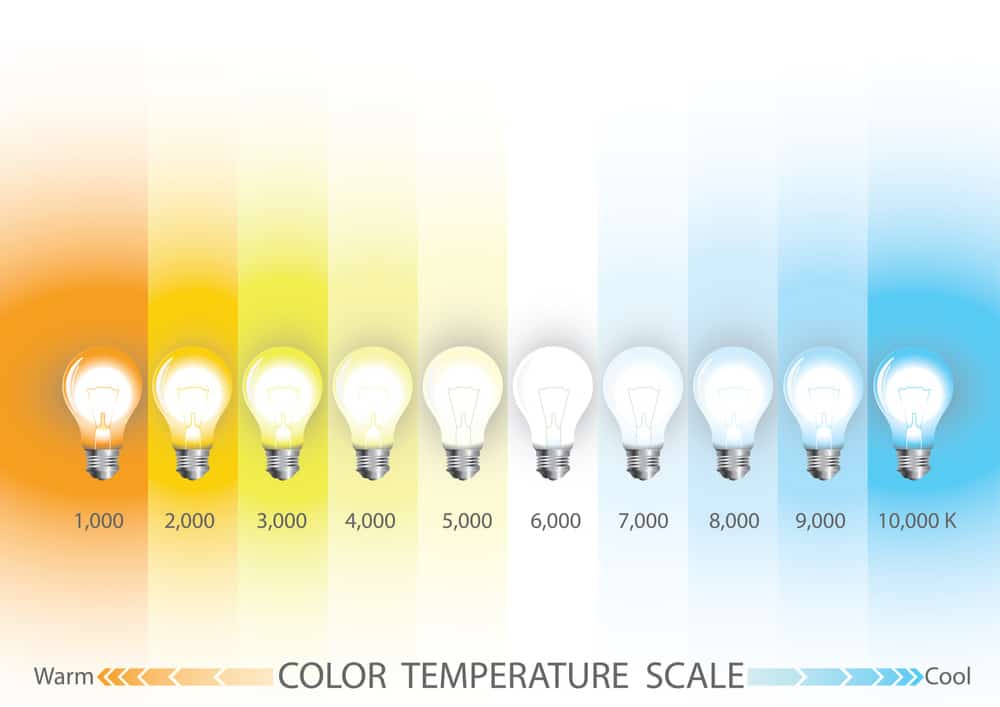
Color temperature refers to the appearance (also known as the color) of the light.
The color temperature of the light bulb would help you understand how the light would interact and look within a certain environment. Color temperature can range from Warm to White, up to True Daylight (Bluish).
True daylight is placed on the higher side of the temperature scale while warm light is on the lower side of the scale despite having “warm” as its name.
A warm light exudes the appearance that leans more on the orange, amber light. This type of color temperature will give the certain space an inviting ambiance while remaining the cozy tone at the same time.
In the temperature scale, the cool-white is found between the warm light and true daylight. And since it is found in the middle, cool-white gives good equity and balance between both ends of the scale spectrum. The cool-white appears to have a bright and vibrant light.
True daylight, on the other hand, gives off this very crisp and stark mood since it is pure white light. One of the lightings that are considered as true daylight is the natural light (coming from the sun).
Meanwhile, artificial daylight is leaning more on the cooler side of the spectrum. This kind of lighting is considered a “cold” light since this light gives off a blue-white light.
Doing experimentation with lights is an interesting and fun learning process. Having such a process of experimentally changing and shifting lighting can greatly affect the mood of the whole room since lights can change how colors appear in a certain space.
However, you have to be careful because just like any other experiment, some effects could lead to undesirable results.
That’s why, it is always best to understand and to bear in mind the relationship between colors and light when you plan for lighting because this factor plays a heavy role in setting the overall mood, feel, and tone of the room.
Psychological Effects of Lighting & Color
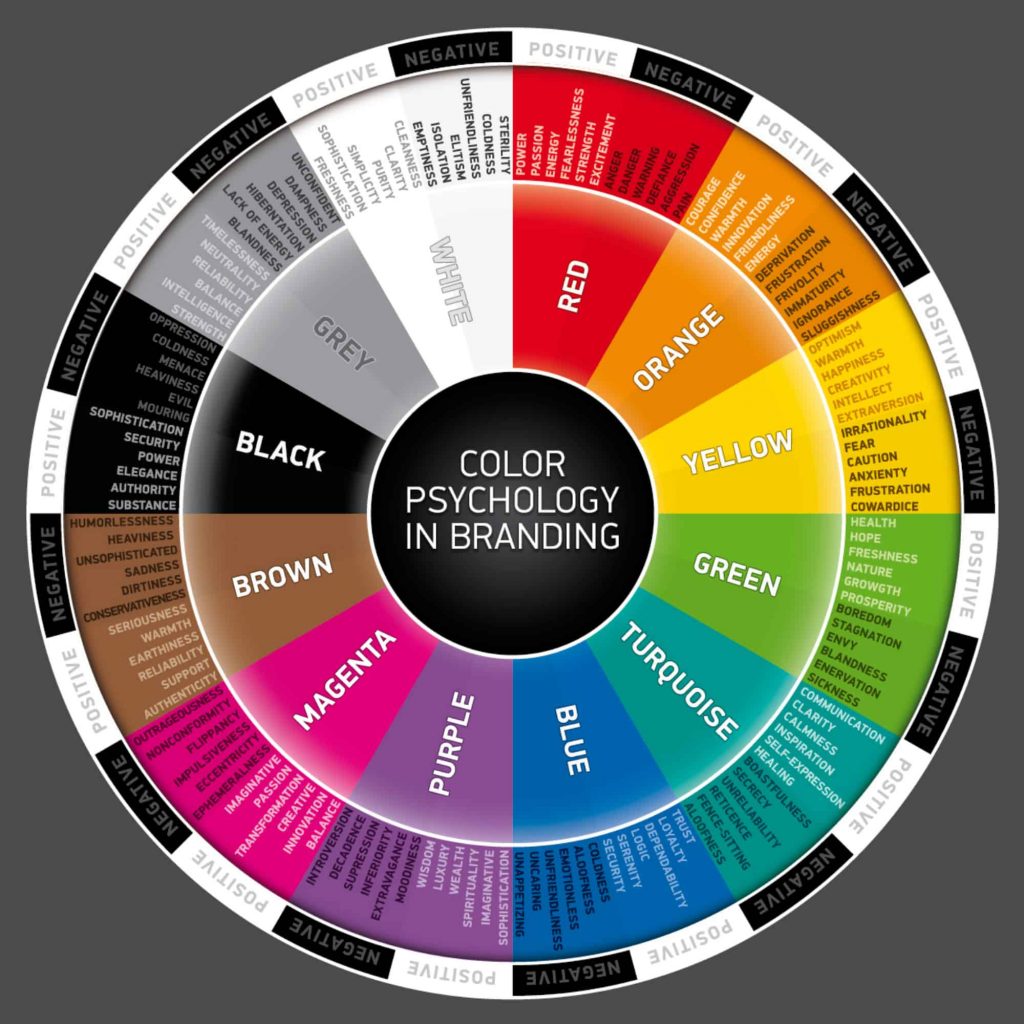
As stated in the previous statements, interior design has many functional aspects aside from the lighting factor alone.
While it is important to understand how the lighting will work within a certain place, it is also best to know how certain lighting would affect how the room would look and feel.
Many researchers and psychologists have found out that one of the factors that would greatly give people a positive effect on their mood is the perfect amount of lighting in a space.
Too much or too little lighting, on the other hand, can have a negative impact on people’s moods.
That being said, you may ask, “how can I achieve that perfect amount of light for my space?”
The answer to the question might come a little bit tricky, but it always boils down to having well-planned and well-thought lighting options.
But in order to properly design and plan your lighting settings for your home or space, there are different types of factors that you need to understand and bear in mind.
3 General Groups or Types of Lighting
The three general Groups (or Types) of lighting come in three primary light sources namely:
- Task,
- Accent,
- and General (ambient) Light.
Every type of light plays a necessary role in different spaces of your home. Also, they can even crossover between two types of models.
In some instances, an overhead pendant light can be considered as both general or task, depending on what use it is intended for.
A lighting plan that is well thought out will greatly utilize all of the three types of lighting sources in a single space.
Listed below are the details of the three primary sources of light to give you a more in-depth view of the three types of lighting and the role that they intend to play in your space or home.
1. General Lighting
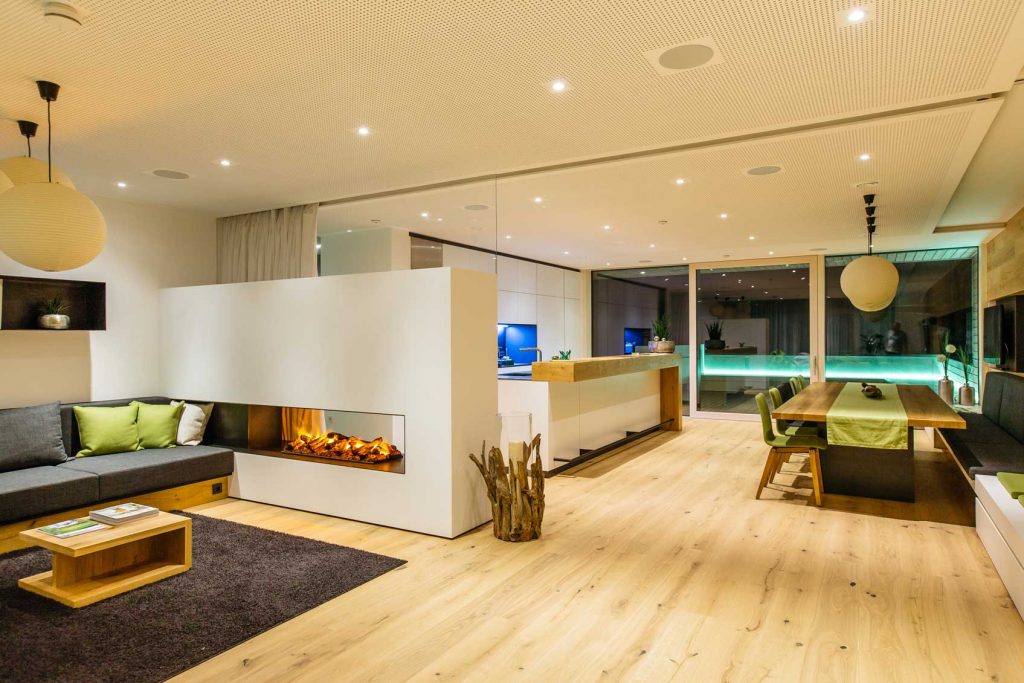
The ambient lighting, which is most commonly known as general lighting, is referred to as the primary source of light in a certain space or room.
The purpose of general lighting is to give out a broad scale of lighting for the whole entire room. However, this type of lighting source could directly affect the overall mood and ambiance of space, this is why it is often called ambient lighting.
When there is an abundance of natural light present in a room, that natural light can possibly be a source of ambient lighting during the day.
However, during the night where natural light is no longer available, different kinds of fixtures such as beautiful chandeliers and recessed lights are often used as general lighting.
2. Task Lighting
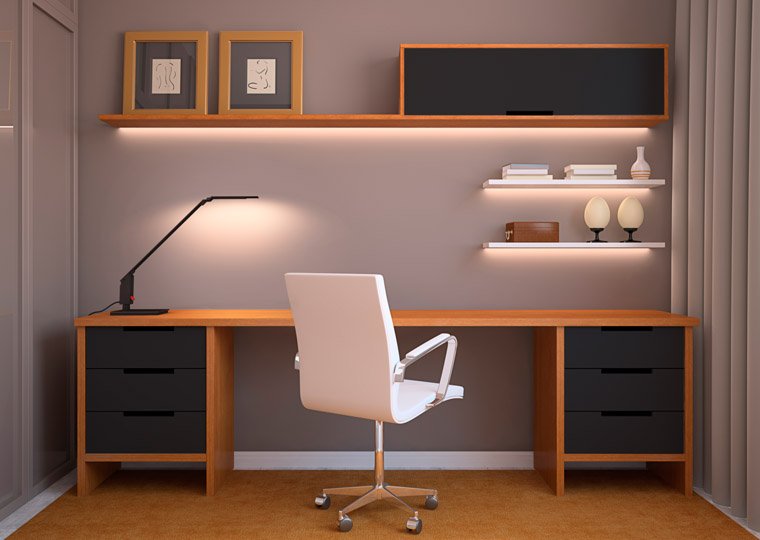
From the word “task” itself, the function of task lighting is as straightforward as its name suggests.
Task lighting indeed provides illumination for a specific task or activity.
In comparison to the other types of lighting, task light is more localized. This type of lighting can come from different types of sources.
The main function of task lighting is to illuminate a certain workstation or work area, providing you with sufficient contrasting light that is enough to enhance your functionality and productivity.
Vision has a great impact on aging. As people get older and older, their vision also gets poorer.
This is when the task lighting comes into action.
Task lighting is indeed very effective and efficient in reducing the glare caused by lights and therefore, prevent any eye strains when necessary.
The kinds of work areas where task lighting is usually needed are around the reading spaces, cooking places, study areas, craft spaces, and some other types of hobbies that are fixed in on space and are often stationary.
Task lighting, just like the general lighting, can come from a lot of light sources such as track lights or recessed lights. But unlike general lighting, the perfect amount of task light can be achieved by providing smaller lamps, depending on the location.
Some of the many examples of task lighting are desk lamps, under-counter lamps, and table lamps.
The importance of these types of task lighting is that it provides a shallower form of light. This is ideally designed to increase your productivity in your designated work stations or work areas by cutting back on any glare and limiting shadows.
3. Accent Lighting
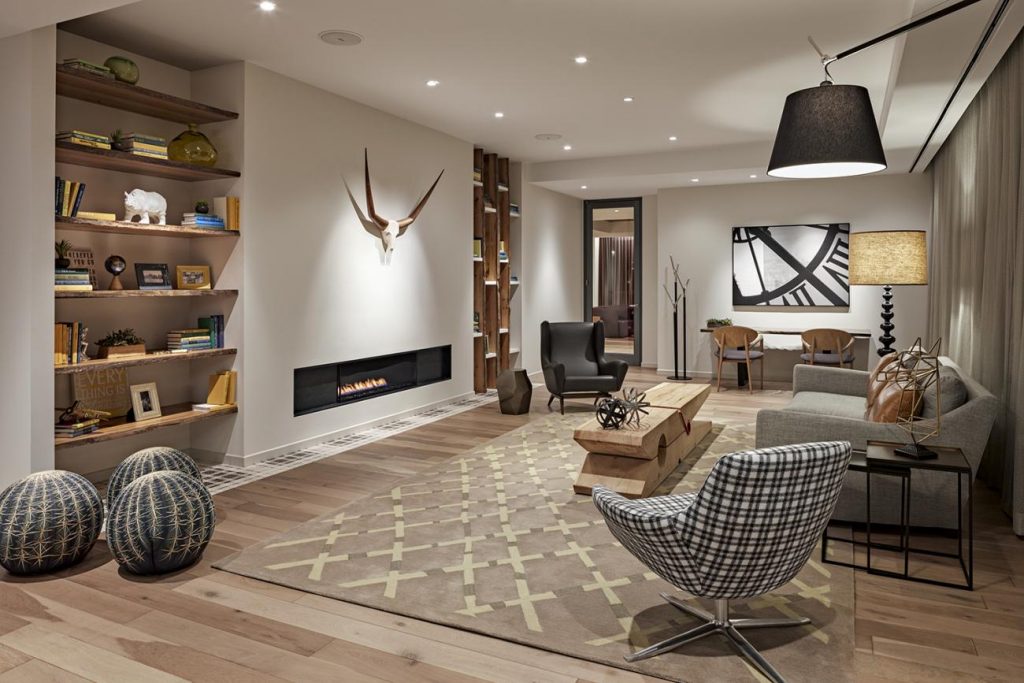
Accent lighting, compared to the other two resources of lighting, is more focused on the decorative and design aspect of the space.
But that doesn’t mean that design is not an important factor when choosing out your general and task light fixtures.
It just simply means that accent lighting is primarily designed to give focus to a certain accent in the room. Unlike general lighting, accent lighting’s primary function is to create a certain focal point for the given space.
Accent lighting plays along with general lighting since it adds dimension to the environment.
Not only that, by using accent lighting in your room, you are bringing out a focus or attention to a certain work of art or a unique architectural design.
Accent lighting, therefore, gives emphasis on the wonders of photographs and the beauty of artworks. This type of lighting also enhances the color or texture of the walls and simply showcases the light fixture itself.
Accent lighting, moreover, adds some sort of a dramatic mood to any space it is placed in. The goal of this lighting source is to draw you and your audience’s eyes to the certain focal point that it has created.
The accent light that is well-executed will bring the eyes’ attention to what is being lit and not on how that certain subject is being illuminated.
Perfecting the position and angle of your accent lights plays a very essential aspect in directing the attention to whatever object or work of art you chose to showcase, emphasize, or enhance.
Sure, you might take a lot of experimenting and shifting to do to get your most preferred look, but once you achieve the desired outcome you have in mind, everything is well worth the effort.
Interior Lighting options (Fixtures)

There are many different types of light fixtures you can choose from.
Some variations of light fixtures are meant to be utilized for a certain kind of lighting, such as general lighting, accent lighting, or task lighting.
Most light fixtures, however, are relatively adaptable and versatile. This means that a lot of fixtures that are available in the market can be used in many different ways, and still be functional no matter what.
Architectural Lighting
Architectural light fixtures are the ones that are integrated into the structure of the building. This kind of light fixture can be referred to as soffit, valances, or cove.
One of the defining characteristics of architectural lighting tends to be placed on a shelf or a ledge. The light that is given off by the architectural light fixture is usually bounced towards the upper parts of the wall or towards the ceiling.
These light fixtures can also be located and placed in wood, metal, and glass valances, which are then installed high above the walls or above the windows.
Architectural light fixtures can also possibly bounce light within the structure itself.
On the other hand, the soffit technique mostly relies on the light that is being placed near the ceiling. This will then allow this type of lighting to provide ambient light as it radiates downward.
Since many techniques involve bouncing the light off the walls to minimize the casting of shadows, architectural lights often emit indirect lighting.
Hence, architectural light is most of the time considered as a source of general lighting.
Ceiling Lights
The ceiling light is an umbrella term that refers to the lighting placements in various rooms.
There are a lot of options and models of ceiling lights you can choose to best suit your ceiling.
Like all the other types of lighting, ceiling lights vary in design, shape, and size. And it’s up to you to decide what fits your preferences the most.
Pendant Lights
Pendant lights are commonly found in the dining room and in the kitchen.
These certain types of light fixtures can generally enhance and improve the design and aesthetics of your room or place. Pendant lights are usually the type of light that suspends from the ceiling.
There are many sizes, lengths, and styles you can choose from.
Some pendant light fixture models are sold in single lights, but most of the time these lights come in groups of four to 10 pieces, depending on the brand.
Recessed Lighting
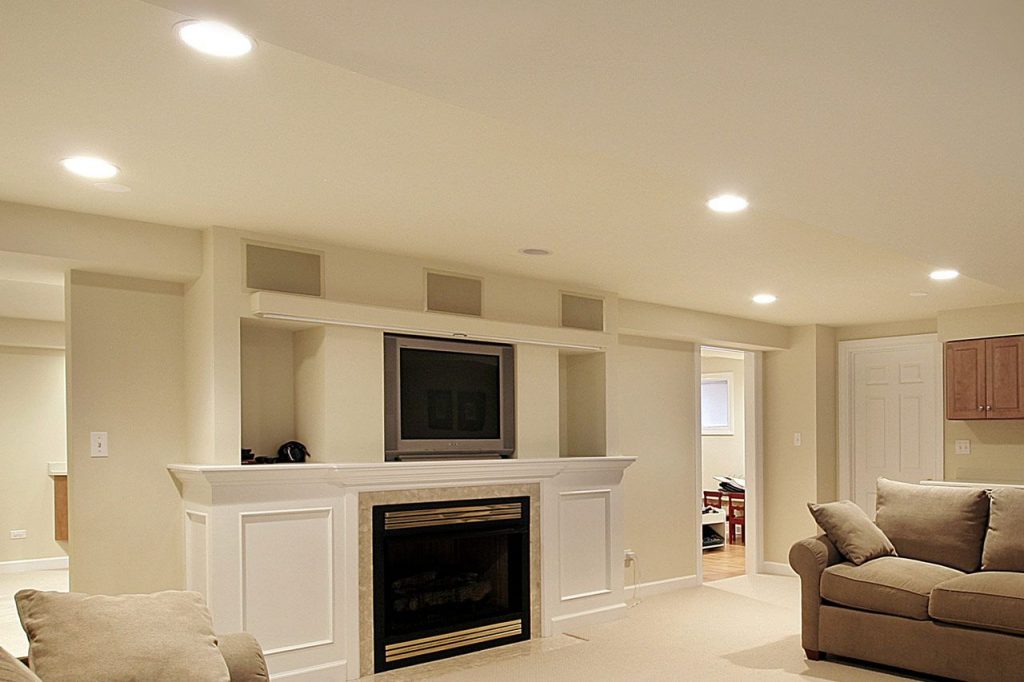
A type of light that lies in the opening of the ceiling is referred to as recessed lighting.
Usually, at least six inches of clearance must be allowed during installation, and the area that surrounds the light fixture must be well insulated.
A relatively narrow band of light is usually the kind of light that is emitted from the recessed light. But, recessed lights can be a great choice as general or ambient lighting if you install multiple recessed lights in the ceiling.
On the other hand, a fantastic form of accent lighting or task lighting can be created by installing a few recessed lights on the intended location.
5. Track Lighting
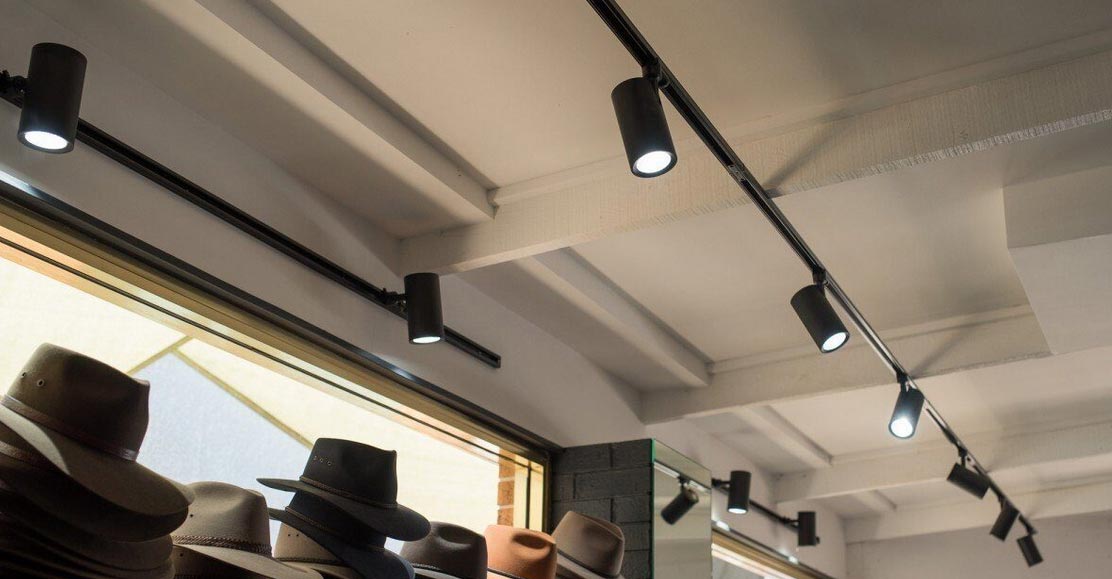
Track lighting is the type of lighting that can shift and change position, as well as adjust the direction along the track. Track lighting is the one that is suspended from the ceiling.
This type of lighting primarily functions as task lighting or accent lighting.
However, it can also work perfectly as general lighting depending on if there are many of them installed and on how much strength the bulb has.
6. Under-cabinet Lighting
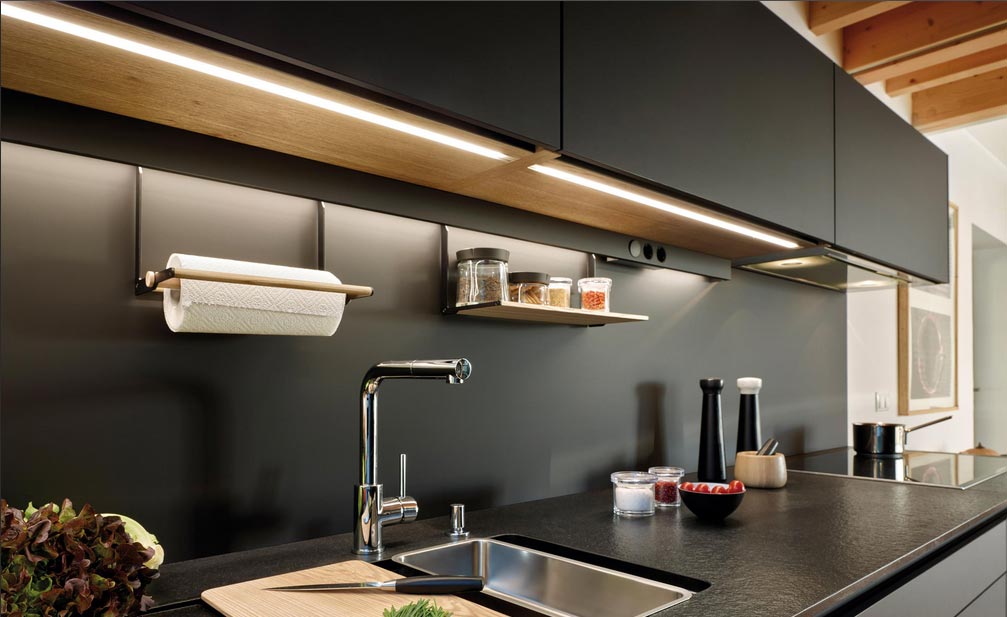
The under-cabinet lighting is pretty straightforward as its name suggests- these types of lights are installed underneath your cabinets.
Under-cabinet lighting is said to be a prevalent form of task lighting essential in the kitchen since the areas that are within and underneath the cabinets tend to be really poorly lit and dark.
Kitchen places are buzzing work-spaces that require all your attention and vision.
You don’t want to end up chopping off something that’s not meant to be chopped. Leaving the kitchen with flour fingers remaining can be a really bloody case.
7. Pendant Lighting

Those light fixtures that hang from the ceiling are called pendant lighting. The primary function of the pendant lighting is to provide light on areas that are directly below it.
This type of lighting is most commonly located above a dining room table or a kitchen island. In terms of decoration and aesthetics, pendant lights are on top of the game.
These light fixtures are also excellently suited as ambient lighting or task lighting.
There are a lot of various types of pendant light fixtures available in the market, so it’s guaranteed that you surely will find the right one that best suits your home’s interior design.
8. Chandeliers

Chandeliers are the type of light fixtures that are suspended from the ceiling just like the pendant lighting.
Chandeliers and pendant lighting, in terms of their functionality, are very similar.
The only distinguishing characteristic that sets aside the chandelier from the pendant lighting is that the light that the chandelier emits reflects off the ceiling and is pointed upward. Also, unlike pendant lighting fixtures, chandeliers provide a much more stylish and decorative flair to the entire space.
Clearly, there is a massive amount of wonderful chandelier designs you can choose from. If you are looking for a light fixture that can suffice for general lighting, the chandelier is an excellent example.
As mentioned in the previous statement a while ago, chandeliers showcase a lot of shapes and styles for your home. There is what we call a Shaded type of chandelier.
This type constitutes a brush glass that surrounds the individual lights. These look similar to the island pendant lights, but these types of chandeliers have more branches as compared to the said pendant light.
Crystal chandeliers, on the other hand, are composed of a series of bulbs that are surrounded by glass crystals that reflect light throughout the entire place.
This type of chandelier exudes a very ornate style and a formal aura. Crystal chandeliers are not suited for every home especially most houses nowadays are casually designed. But if you plan on having a striking effect towards the mood of your home, you might want to consider these crystal-chandelier-in-a-casual home combinations.
Another type of chandelier is the candle-style chandelier. The name is pretty straightforward as what its name suggests- a chandelier with lights that look like candles. The said type aims to form a replica of the traditional candle lighting. Hence, it exudes a fairly formal aura and style.
Meanwhile, there is also what we call a drum chandelier.
This type of chandelier is basically shaped like a drum. This type gets its name and shape from producing a seemingly large shade surrounding the series of lights. Drum chandeliers give off a more muted and dimmer light through the room.
This makes it a great choice for kitchens, bedrooms, living rooms, dining rooms, and even in the bathroom.
9. Wall-mounted lighting
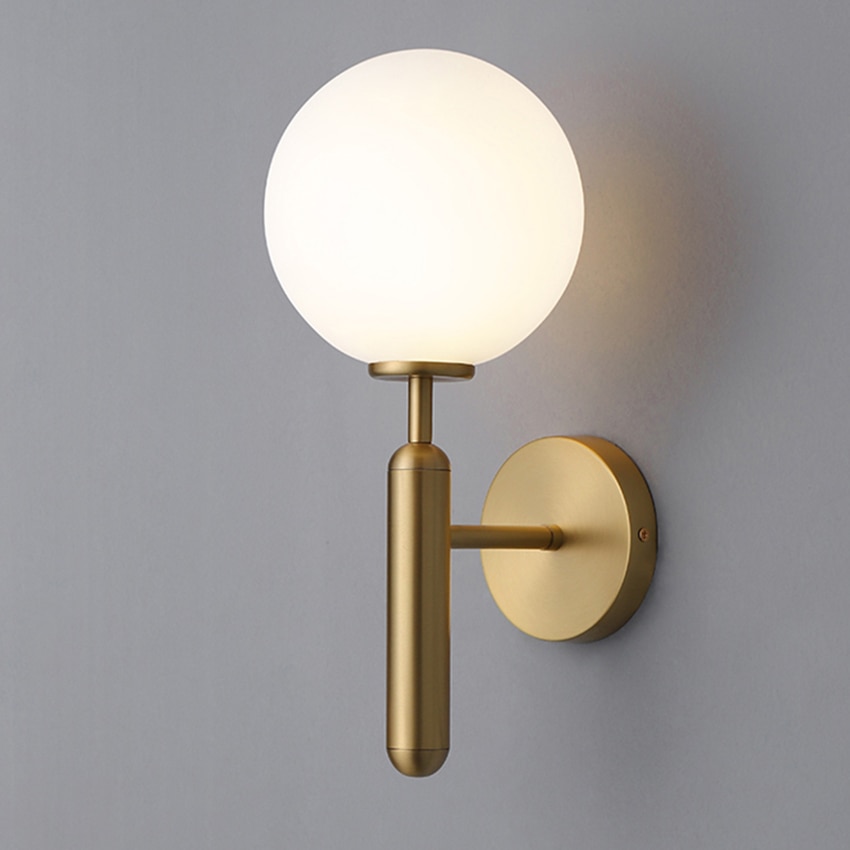
The types of light fixtures that emit downward or upward lighting are called wall-mounted lighting, which many of them are also referred to as wall sconces.
The illumination of wall-mounted lighting is on a smaller scale and is also reasonably localized as compared to the ceiling fixtures. This, in turn, will be an excellent choice if you’re looking for an accent light or a task light.
But, wall-mounted lighting could also be used as a general lighting source depending on the strength of the bulb. Wall-mounted lighting, when used as general lighting, will give off a more pleasant and relaxing ambiance.
Wall-mounted lighting, also known as wall sconces, offers a lot of benefits in both indoor and outdoor settings, more especially.
Many of the homeowners greatly appreciate the soft light that is created by the wall sconces. In comparison to much overhead lighting, sconces offer a particular type of mood or ambiance because of the soft light that it produces.
Wall sconces have three major types of power sources namely battery-operated, hard-wired, and plug-ins. Some of the wall sconces are designed to hold candles and many others.
Hard-wired wall sconces are the most popular choice for many homeowners because they offer a polished look for your room and they are also very convenient to use and operate. Hard-wired type means that the light fixtures are connected to the internal electrical wiring of your house.
These types of wall sconces can be easily operated with a light switch, as the standard overhead lights. Even though hard-wired wall sconces create a polished and finished look to any room you wish to place it in, where you are able to install them can be very limited.
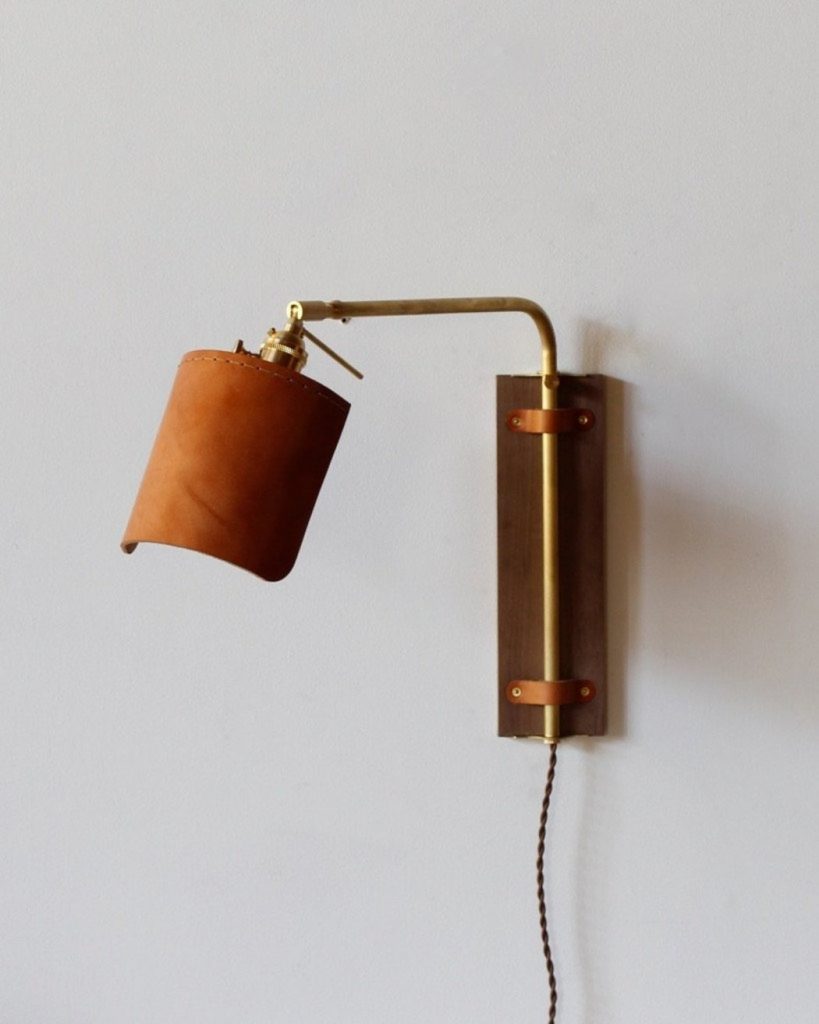
Plug-in wall sconces, on the other hand, works by using the traditional electrical cord that plugs into any outlet in your house.
The big advantage of these plug-in sconces is that they provide a lot more options on when and where you plan to install them since they don’t connect to the electrical wirings of your house.
However, these sconces still need to be placed near the outlet enough for the cord to reach.
Some homeowners preferred the polished finish of the hard-wired sconces as compared to the plug-in sconces where the cord is generally visible to the eyes, creating a somewhat messy and less polished look. But, there are plug-in sconces that incorporate cool design elements that work as a disguise of the cord.
Plug-in sconces, as compared to the hard-wired type, are less convenient to operate since these types cannot be turned off and turned on by just the simple flip of the light switch.
Plug-in sconces are controlled by unplugging the cord or just by the switch located on the fixture itself.
Meanwhile, wall sconces that are operated by a battery are a less popular choice for the crowd, but they do offer a lot of advantages and benefits. Since these wall sconces are battery-powered, they have the distinct ability to be hung easily in almost every place of the house.
You are not limited to the idea of placing the battery-operated sconce near a power outlet nor by incorporating these sconces within the reach of your home’s electrical systems.
However, the downside of having wall sconces operated by a battery is the need to replace the battery from time to time. This means that wall sconces powered by batteries will need more effort and a lot more budget from purchasing batteries aside from purchasing the light bulbs themselves.
But to some degree, the expenses are quite offset because most of the battery-powered wall sconces are very affordable compared to the plug-in and hard-wired options.
Lastly, there are wall sconces that function as candle holders. These wall-mounted candle holders offer the convenience of not having to worry about tying it to a power source. Some homeowners like the kind of ambiance that candlelight offers compared to the light sources powered by electricity.
One of the advantages of using wall sconces that function as candle holders is that they are less expensive in terms of purchasing and battery replacement needs because you are not using any batteries or even using electrical powers.
You can even avoid the hassle of having to replace the candles from time to time by opting to use battery-operated candles. These types are a much safer and beautiful alternative.
10. Floor, table, and Desk lamps

Floor, table, and desk lamps are the types of lamps that don’t need to be installed. You can directly plug these fixtures into an outlet to use them.
The best thing about these lamps is that they are extremely handy and portable.
If its current location starts to bore you or if you don’t like where it is placed, you can easily carry and transfer them to wherever you decide to place them.
Aside from the fact that you can move these light fixtures around with ease, their accessibility and versatility make them very likable and practical at the same time.
Not only that, but these lamps also provide you with a sufficient amount of task lighting. The number of styles is very abundant in the market, so it’s very easy for you to pick and choose what you like the most.
There are also prominent-sized floor lamps that are available. These lamps emit a sufficient amount of light enough to offer general lighting for the entire room.
11. Smart Home Lighting
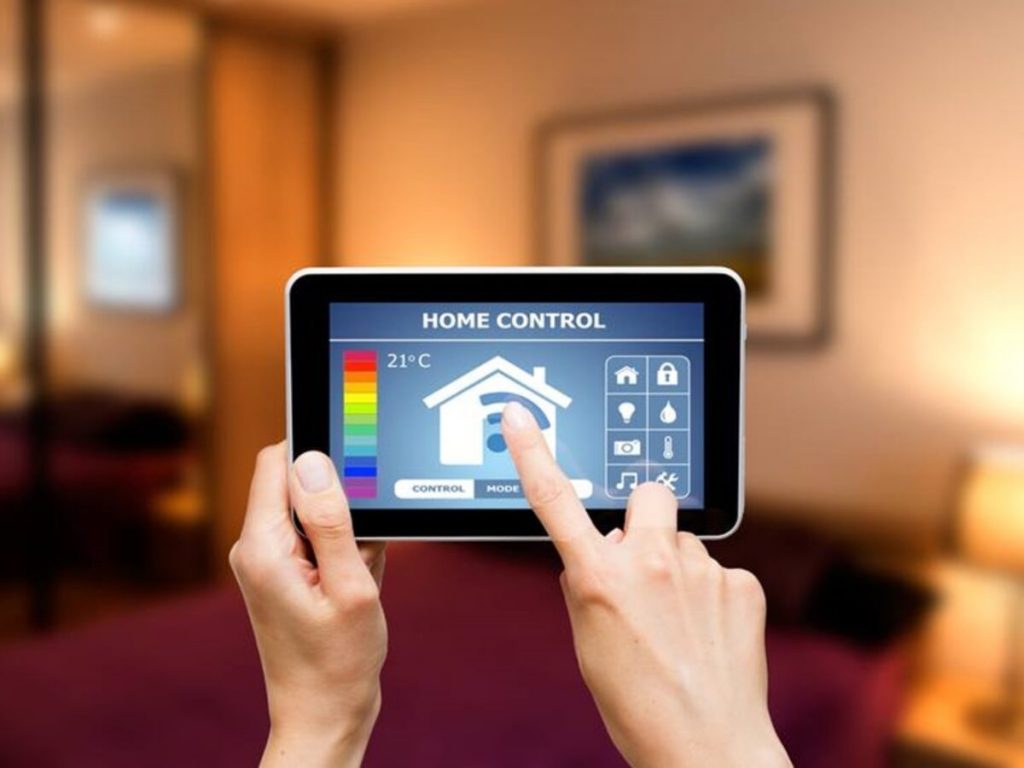
Down on the last list is smart home lighting. Smart home lighting is something that you should consider for your home. This technology generally includes smart light bulbs equipped with smart lighting technology. Smart home lighting is a type of lighting technology that is very innovative and has become a quickly emerging and evolving aspect of lighting that makes your modernized life much easier.
Choosing a smart home lighting system comes with many advantages. The first major advantage of smart home lighting is the amount of energy it can save. Aside from the fact that it is a more sustainable option, this will also save you money, lightening up the load on your wallet every time of the month. When you can make sure that each of the rooms in your home is only illuminated when it is necessary, the savings on energy and money will start to pile up.
In addition to that, smart home lighting also brings peace of mind to you and your family members. Do you know why? Because you can still easily check your security or simply light up a certain place in your house to make it look and appear occupied even if you are away from home.
Also, there is no need to worry if you forgot to turn some lights off because you can easily do it remotely.
To add to the list of major advantages of smart home lighting, this type of technology is designed to be very accessible.
Literally anyone including your grandparents, disabled person, your children, and other relatives or individuals who seem to have trouble around the house.
It is a major thing to be able to control your environment with just a handheld touch of the screen.
There are actually many smart light bulbs available in the market today. These light bulbs will allow you to control them on your tablet or even with your smartphone!
For those individuals who are lighting enthusiasts or basically just anyone who is fond of new and amazing inventions, having the SmartFX light bulb might spike up their interest.
With just a few touches on your screen, you can light up a room and fill it with any hues available in the color spectrum! Cool, right?
Do you know the reason why most people nowadays really divert into wireless controls? Because it really makes life a lot faster and easier. You don’t need to get up from your comfortable position just to find the switch or dim the lights. Smart home lighting gives you full control of the lights all at the tips of your fingertips.
Whether it will be used for a wild party, night gaming, a focused work setting, a romantic evening, or even a relaxing movie marathon, the smart light bulb will set the mood for you. With this, you can really focus on enjoying your activities.
There are many kinds of smart light bulbs available out there. One of them is the Philips Hue smart light bulb. This product is considered a starter kit and is also one of the finest finds in the market.
This starter kit comes with four bulbs that create a soft, and nice white light that is generally great for any purpose you intend to use it for.
The hue is also adjustable between warm white up to the cool daylight. With this product, you can link as many as 50 lights together all to a single control system. You can control these lights via Google Home, Apple HomePod, or the Amazon Echo.
The next product on the list is the Sengled Element Classic A19 Kit. This product is much more affordable than the Philips Hue. This has an all-in-one package that comes with two bulls, one hub, and an Ethernet cable.
Not only that, these bulbs impressively use only 9 watts of energy yet deliver 800 lumens of light. This makes it a really great choice for those individuals who like to save money not only during the purchase part but also on the electricity bills every month.
To top it off, these smart light bulbs will last you for up to 25,000 hours. Amazing, isn’t it?
This can be achieved by using a minimal amount of watts that is enough to power up the bulbs. The Sengled light bulb can be connected through Google Home or Amazon devices, but they can also be able to control by hand.
And if you wonder how this product keeps its prices so low, that’s because this kit connects to a 2.4Hg network without any need for a hub.
Another smart light bulb that this article can vouch for you is the Wyze Bulb. For those individuals who are tight on the budget, this is the best choice for you.
These light bulbs come in four packs which are highly adjustable, with dimmer settings that range from 2,7000k to 6,500k.
The basic control settings of this Wyze Bulb are limited but you can use Google Assistant, Alexa, or Wyze up for more access settings. the good thing about the Wyze smart light bulb is that you can purchase one piece to test it out and when it’s an amazing experience for you, you can level up your light game to the four-pack.
Of course, these are just some of the smart light bulbs suggestions, to see out for more of these, you can check this link out to find the perfect smart light bulb that will light your home and your life: https://www.homestratosphere.com/smart-light-bulbs/
Outdoor Lighting Options
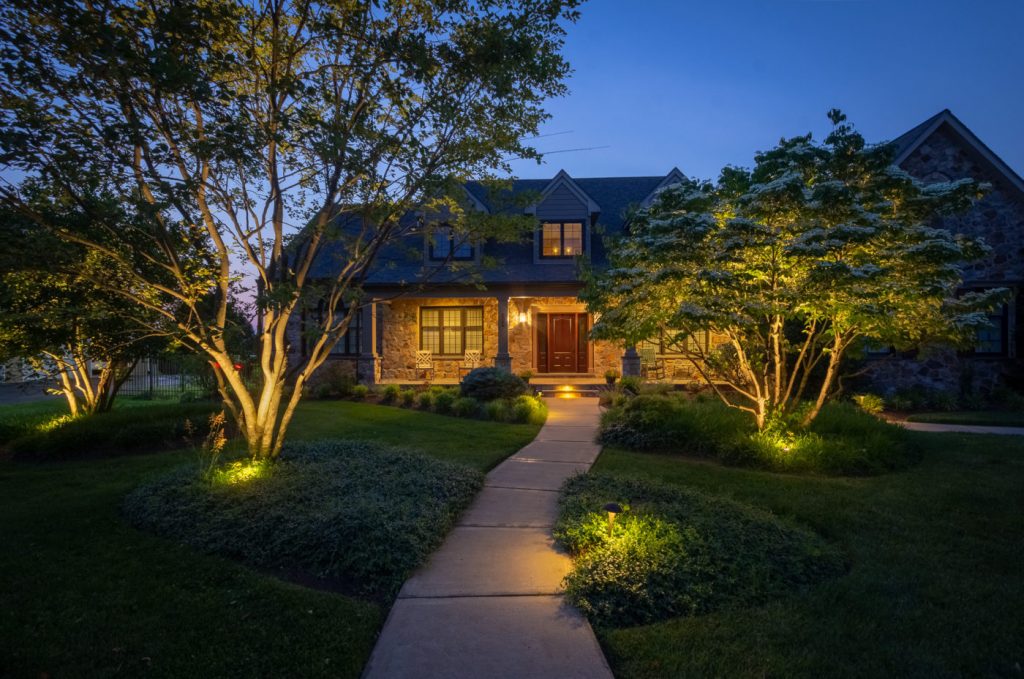
You have seemingly an unlimited amount of outdoor lighting options just like the lighting options available inside your home. From Low voltage lighting options for your landscape to door lamps and solar powered walkway lighting.
Light bulbs

The kind of light bulb plays an important role in your interior design lighting plan just like the types of fixtures and lights that are mentioned in the previous paragraphs.
While there are a lot of light bulbs that are currently used in interior design, there are the most common types of light bulb models that are available.
Light bulbs differ from one another in terms of their strength, shape, and intensities.
It is best to know what you most prefer and what type of lighting you should use it for, in order not to be overwhelmed by the massive amount of light bulbs you can choose from.
To start with, there are actually more than 50 different types of light bulbs available in the market today.
Each of these bulbs varies in base, shape, and size. It’s awesome to know that there are a ton of light bulbs you can pick and choose from, but sometimes, it can get a little frustrating.
For example, if your 1980s house has all kinds of different lights, that means that these also require different types of light bulbs. Hence, whenever these light bulbs need changing, you need to figure out what type of light bulb it needs so that you can easily find it in online stores or in a hardware store.
The frustrating part comes in when you don’t know what type of light bulb you need. With the massive amount of different types of bulbs, you sure will get lost and confused.
Hence, it’s very important to do your research about the various types of light bulbs so that when your lights need some replacement, you will know exactly what to look for.
Check out the list below about the different types of light bulbs for some little guide.
Incandescent light bulbs
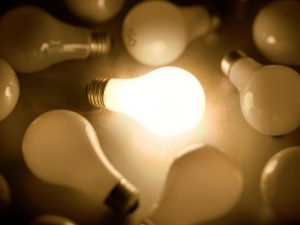
One of the most affordable and the most commonly used bulbs are incandescent light bulbs.
These light bulbs emit a glow that is inviting and warm at the same time. Incandescent lights compliment most skin tones that’s why it’s one of the most flattering light choices for many people.
Incandescent light bulbs are also an excellent choice for dimming light bulbs placed in the bathroom. However, even if these types of light bulbs are one of the cheapest options out there, they only usually last for 700-1500 hours of use, which makes them less energy efficient as compared to the other types.
In terms of incandescent light bulb shapes, there are a lot of types that are available out there. One of them is called the Incandescent lamp.
These lamps contain a filament that is heated until it glows. The said filament is what produces light in these bulbs. Incandescent lamps don’t contain mercury, so they aren’t as energy efficient as the other types of light bulbs.
Incandescent lamps can last you for about a year. But other than that, more innovative incandescent lamps include an additional benefit of having such capacity to be used with a much dimmer switch. This will allow you to simply control the brightness in a room with so much ease.
Halogen light bulbs

Halogen light bulbs are a variation of incandescent lights that emits the closest replica of a natural light, which is also referred to as the white light. Under halogen lights, colors will appear and pop much sharper tones. Hence, these types of light bulbs are excellent for a room that has a vibrant color. Compared to incandescent bulbs, halogen light bulbs are a bit more efficient energy-wise, but they are also more expensive. If you plan on purchasing these bulbs, be careful on mounting them, because compared to other types of light bulbs, halogen lights burn at a much higher temperature. Halogen light bulbs are best suited as a task light, especially in pendant lights and under-cabinet lights.
One type of halogen light bulb is called the tungsten-halogen double-ended. These halogen lights are usually straight tube bulbs that are mainly used as wall lamps or desk lamps. Sometimes, these light bulbs are also used to light any landscape outside or inside your house.
There are low-voltage halogen bulbs. These low-voltage lights are specially designed to emit low-voltage lighting that is best used as a landscape light. You can decide whether you want different beam angles, including narrow, wide, and very wide. These settings will allow you to focus the light as little or as much as you would like. Low voltage halogen bulbs are a very perfect choice as a floodlight, wall lights, or even as a spotlight.
The good thing about halogen light bulbs is that they can be safely disposed of in your trash bins since they do not contain any hazardous materials unlike some other types of light bulbs. Although halogen bulbs are recyclable, not all recycling centers accept them because they tend to require a more specialized process.
Fluorescent light bulbs

If you prefer a flatter and much colder illumination, then the fluorescent light bulb is the best choice for you.
Just like halogen bulbs, fluorescent light bulbs tend to create a replica of natural lighting, but they work best as ambient lighting.
However, fluorescent light bulbs are not ideal to use in a lot of rooms aside from attics and basements because these light bulbs emit light that is often too sharp and harsh. On the other hand, fluorescent light bulbs are usually used as commercial lighting because they have an immense ability to light up large spaces.
But that doesn’t mean you should stray away from fluorescent light bulbs. Fluorescent lights last longer than incandescent lights and there are also a lot of different types available in the market that offer a different and much warmer color.
Twisted fluorescent light bulbs use much less energy than the incandescent types. These will also last for a very long time. This long span of energy will allow you to save time, energy, and money because it takes longer for you to replace these bulbs from time to time.
These lamps are a great choice for business areas and home spaces because they have a variation of brighter or dimmer options.
Compact fluorescent lamps, on the other hand, put off very little heat and will last you for thousands of hours.
Because of how they work and the way they are constructed, they tend to be more expensive than those with incandescent lamp bulbs.
However, the usage of less energy and the long period of activity will pay up for its cost. It’s worth it.
Tube fluorescent lamps are also available in the market today. Just like all the fluorescent light bulbs, these will give off a strong source of light, but there is no dimming option for these bulbs.
Unfortunately, as they get older from time to time, tube fluorescent lamps will need to be replaced as they begin to flicker as they age.
LED light bulbs
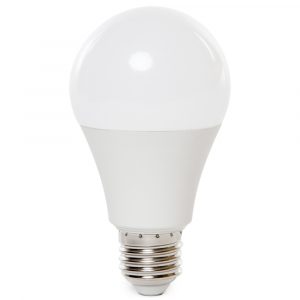
A light-emitting diode, also known as LED, is a kind of technology that is used in lighting which is very energy-efficient and at the same time, really durable.
Even though LED lights show a great promise in using less and efficient energy for economical reasons, LED doesn’t offer diffused light as compared to the other types of light bulbs.
Most of the LED lights available in the market out there provide lighting that is directional.
This means that these lights can be a great choice for task lighting, but not as general or ambient room lighting.
However, there are certain innovations of LED lights, with models that are designed to have clusters of LED bulbs to aid for a broader and much larger reach for illumination. These kinds of light bulbs, however, can be pretty expensive and costly.
One of the types of LED bulbs in terms of bulb shape is the Globe LED bulbs. These kinds of light bulbs are shaped like incandescent bulbs. But, instead of using filaments, these bulbs use light-emitting diodes (LED) to create light.
Globe LED Bulbs are a perfect replacement for the older light bulbs in your house. Aside from the fact that these bulbs use less energy compared to incandescent light bulbs, they will also greatly reduce the cost of lighting for your business or home.
It is important to make sure and to pay careful attention to the type of light bulbs that you intend to use as your accent lighting, especially when you’re trying to make a certain piece of art your focus or highlight.
Too much exposure to heat and UV light can possibly damage your precious paintings, photos, artworks, and other pieces of masterpiece over time.
LED light bulbs are usually your excellent choice because these bulbs don’t give off any damaging heat or UV light. With this, you can assure that your highlighted piece of artwork will never get destroyed. You surely don’t want a damaged artwork, don’t you?
Where To Buy Lights
Since there are basically thousands of lighting options available for your home, sometimes, it can really get a little overwhelming. But, where do you really start?
Maybe some 20 years ago, you went downtown, entered a local improvement store or home decor store in your hometown, and chose something that catches your eye from their limited edition. Those years, catalogs with some options are always given and provided to you.
But now that we enter into a more techy and modern society, it’s a different ball game. Because right nowadays, you can easily access millions of options for your lighting preferences with just one click on the internet.
Lighting stores are already available digitally and all you have to do is search and click, and then you can gather your options, pick and choose, add to your cart, and then boom! It’s already on its way to your doorstep.
There are the best online lighting stores that this article can vouch for you. One of the lighting stores is called Wayfair, a U.S company that has headquarters in Boston, MA. When you want to shop for garden supplies or home decors, this shop is the way to go. They have catchy commercials and you can easily find exactly what you need.
Also, the biggest online retailer, Amazon, will never fail you. Amazon contains massive options for both indoor and outdoor lights. The abundance of options is sometimes a little bit overwhelming, but it is for sure a fun one.
Aside from that, online shops such as Lumens, Houzz, Lighting Direct, Lamps Plus, and many more, are one of the many stores you should check out. They would offer you a lot of options. That way, you can surely find the perfect light fixtures that perfectly suit your entire home, both indoor and outdoor spaces.
Create a Lighting Plan – Lighting Galleries
When planning the best lighting for your home, part of the process can be extremely complex, especially when it comes down to understanding the different factors that you need to keep in mind. This is the reason why it is really important to have a well-thought outline of your lighting plan that suits perfectly each of your rooms and suffice all the lighting requirements your home needs,
Understanding what kind of lighting that your house needs is the first essential step in creating a lighting plan. And, by reading this article’s in-depth guide on lighting, hopefully, you will have a greater grasp and a stronger knowledge about how to start designing a well-illuminated yet fully personality kind of room.
One good key to making a good lighting plan outside and inside of your house is to see for yourself some of the examples of the different types of lighting and also check out some ideas for specific areas, spaces, and rooms.
Final Thoughts
You might think that you already know everything there is to know about home lighting after enduring this thorough and very comprehensive read.
However, if you are serious about improving your home lighting system, you must consult a lighting professional. They have been doing this their whole life and they can give you the best-case, as well as the worst-case, scenarios.
The final choice is yours, but it wouldn’t hurt to get some help.



